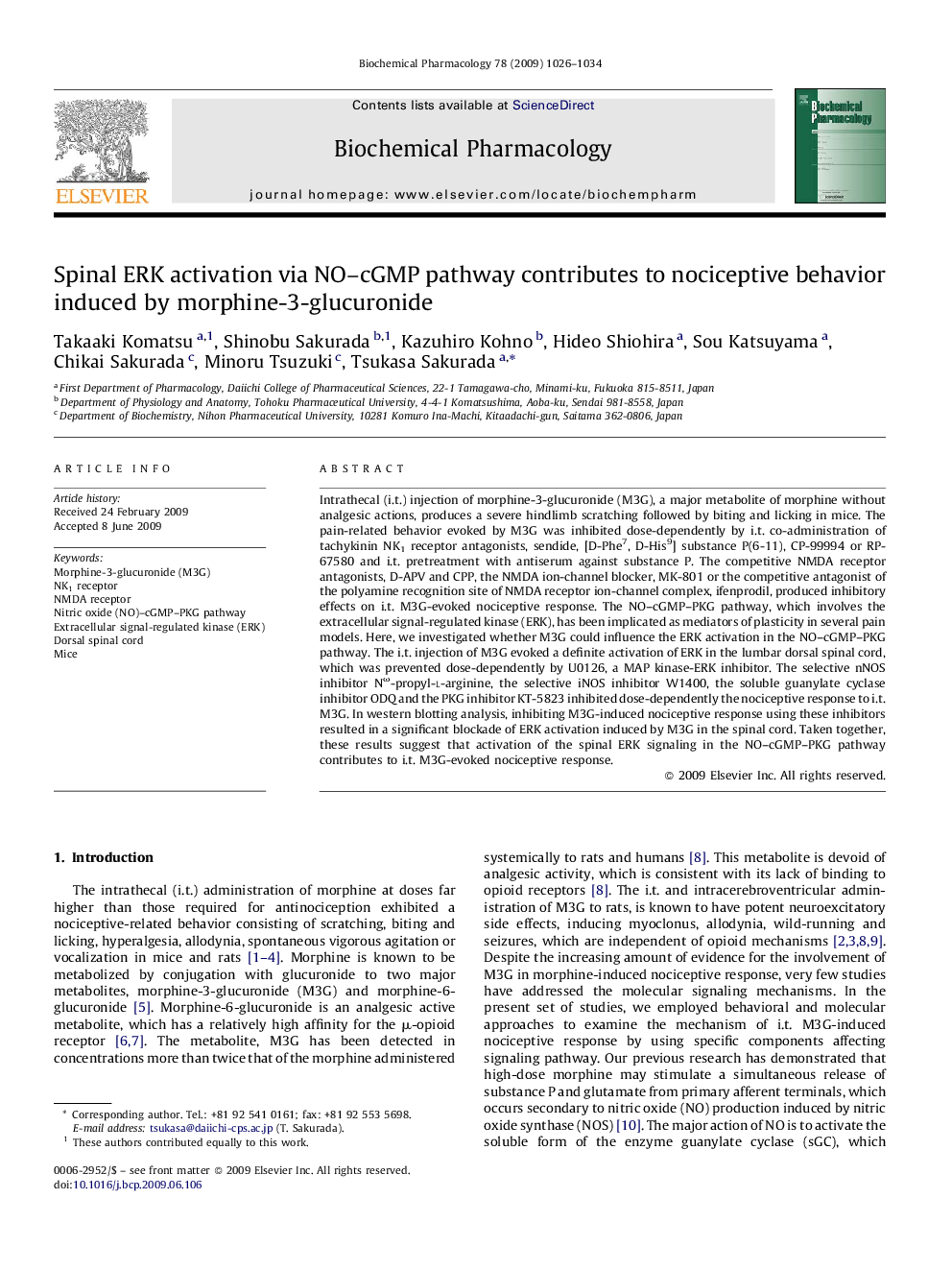| کد مقاله | کد نشریه | سال انتشار | مقاله انگلیسی | نسخه تمام متن |
|---|---|---|---|---|
| 2514023 | 1118444 | 2009 | 9 صفحه PDF | دانلود رایگان |

Intrathecal (i.t.) injection of morphine-3-glucuronide (M3G), a major metabolite of morphine without analgesic actions, produces a severe hindlimb scratching followed by biting and licking in mice. The pain-related behavior evoked by M3G was inhibited dose-dependently by i.t. co-administration of tachykinin NK1 receptor antagonists, sendide, [D-Phe7, D-His9] substance P(6-11), CP-99994 or RP-67580 and i.t. pretreatment with antiserum against substance P. The competitive NMDA receptor antagonists, D-APV and CPP, the NMDA ion-channel blocker, MK-801 or the competitive antagonist of the polyamine recognition site of NMDA receptor ion-channel complex, ifenprodil, produced inhibitory effects on i.t. M3G-evoked nociceptive response. The NO–cGMP–PKG pathway, which involves the extracellular signal-regulated kinase (ERK), has been implicated as mediators of plasticity in several pain models. Here, we investigated whether M3G could influence the ERK activation in the NO–cGMP–PKG pathway. The i.t. injection of M3G evoked a definite activation of ERK in the lumbar dorsal spinal cord, which was prevented dose-dependently by U0126, a MAP kinase-ERK inhibitor. The selective nNOS inhibitor Nω-propyl-l-arginine, the selective iNOS inhibitor W1400, the soluble guanylate cyclase inhibitor ODQ and the PKG inhibitor KT-5823 inhibited dose-dependently the nociceptive response to i.t. M3G. In western blotting analysis, inhibiting M3G-induced nociceptive response using these inhibitors resulted in a significant blockade of ERK activation induced by M3G in the spinal cord. Taken together, these results suggest that activation of the spinal ERK signaling in the NO–cGMP–PKG pathway contributes to i.t. M3G-evoked nociceptive response.
Figure optionsDownload as PowerPoint slide
Journal: Biochemical Pharmacology - Volume 78, Issue 8, 15 October 2009, Pages 1026–1034